Joe:
Remember that Jose Ramirez was the youngest player on an opening day roster in the International League this April. So he's way young for the big leagues. He'll have a lots of opportunity to mature as a major leaguer.
Re: Articles
4592Indians recalled 1B Jesus Aguilar from Triple-A Columbus.
Aguilar was off to a scorching start this season at the Triple-A level, batting .298/.395/.519 with seven home runs and 19 RBI in 37 games. The big 23-year-old will provide a power bat off the Indians' bench and should start against some right-handers. He's worth grabbing in some AL-only fantasy formats.
May 15 - 3:11 PM
Aguilar was off to a scorching start this season at the Triple-A level, batting .298/.395/.519 with seven home runs and 19 RBI in 37 games. The big 23-year-old will provide a power bat off the Indians' bench and should start against some right-handers. He's worth grabbing in some AL-only fantasy formats.
May 15 - 3:11 PM
Re: Articles
4593Actually the scorching start was in April. He had cooled off remarkably in May,
I did like him drawing a walk his first at bat in the majors. A lot of guys would go up to the plate hacking away.
I did like him drawing a walk his first at bat in the majors. A lot of guys would go up to the plate hacking away.
Re: Articles
4594
Ranking the 2014 Cleveland Indians roster at the quarter mark
Brantley's power surge, Kluber's dominance lead the way a fourth of the way through the season
By Jim Piascik
May 16, 2014
Follow on Twitter
Share via: Share: Facebook Share: Twitter Share: Google Share: Pinterest Share: Print Share: Email
The 2014 season has been a comedown for Cleveland so far as the team has been below .500 after making the playoffs in 2013. As always there have been highs and lows for the team, but overall the team has gotten a few more negatives than positives.
These rankings represent a snapshot of each player's performance to date, meaning there are some people ranked higher who will regress down as the season goes on and vice versa. Players with more playing time are typically given some preference to those with less, which is why Greg Kottaras is not #1.
#33 Elliot Johnson, INF/OF (Previous Rank: 24)
Johnson's calling card is his versatility, as he needs that defense to carry his bat. But with some issues in the field -- highlighted by two errors the day before he was designated for assignment -- and Johnson's poor hitting sealed his fate, at least for now. Johnson is currently playing in Columbus.
#32 Jason Giambi, DH (Previous Rank: NR)
Cleveland's player-coach only managed to play four games so far in 2014 due to an rib injury at the beginning of the season and a calf injury more recently. Some of that is old age, but it is also using the disabled list as a way to manipulate the roster to keep Giambi around.
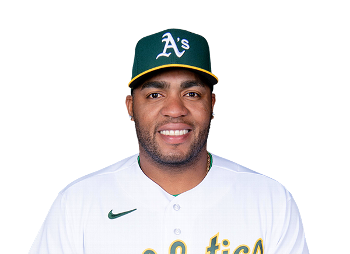
With only one major league game under his belt, it is impossible to really do anything with this ranking. If Aguilar sticks around in the majors, however, we will get a much better idea of how his .298/.395/.519 line in Columbus will translate to Cleveland.
#30 Vinnie Pestano, RHP (Previous Rank: 22)
Much like 2013, Pestano has been a shell of his former self so far in 2014. The right-hander only got 2.2 innings with the big league team, allowing six runs (four earned) in that time before being sent down to Columbus. Pestano has been better in Columbus (3.65 ERA, 1.60 FIP in 12.1 innings) as he tries to work his way back to Cleveland.
#29 Blake Wood, RHP (Previous Rank: 25)
Wood continues to have a big-time fastball, though he did not find much success with it during his brief time in Cleveland this year (7.11 ERA, 4.68 FIP in 6.1 innings). The issue for Wood was walks, as the right-hander walked as many (six) as he struck out before heading down to Columbus. Wood has not been much better in Columbus, as he has walked nine in 4.1 Triple-A innings.
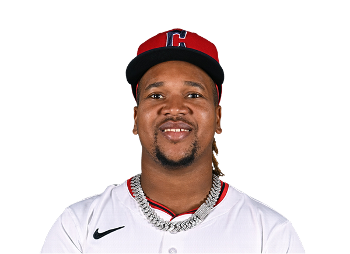
The switch-hitting Ramirez was supposed to get a lot of time at second base while Jason Kipnis is on the disabled list. Ramirez has only played a handful of games, however, as the combination of his early struggles and Mike Aviles' hot streak left Ramirez on the bench. Ramirez is better than this, though he may not get the time right now to show it.
#27 George Kottaras, C (Previous Rank: NR)
Kottaras was only in Cleveland for one game, but he definitely made an impression in that limited time. With two home runs in a game while Yan Gomes was on paternity leave, Kottaras played a key role in putting Cleveland in position to win on May 4, until the next entry on this list blew the save.
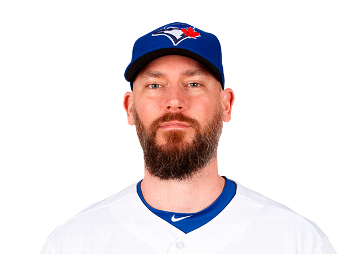
Really, expecting Axford to step into the closer's role set the right-hander up to fail. Axford has not been the same since 2011 and his 2014 has seen the right-hander combine the drop in strikeouts he showed in 2013 with the increase in walks he showed in 2012. It is likely that Axford is better than this, but letting him try to right the ship out of the closer's role is a good idea.
#25 Carlos Carrasco, RHP (Previous Rank: 17)
The strange case of Carrasco continues, as the right-hander actually has pretty decent peripherals this season despite his poor ERA (6.26 ERA, 3.64 FIP in 27.1 innings). Yet his performance lagged behind his peripherals so far in his major league career and the team removed him from the rotation at the end of April. It looks like if the 27-year-old Carrasco will stick in the majors he will need to do it as a reliever.
#24 Ryan Raburn, OF (Previous Rank: 16)
Raburn's BABIP and isolated power in his terrible 2012 season: .224 and .083 respectively. Then, Raburn's BABIP and isolated power in his amazing 2013 season: .311 and .272 respectively. Finally, Raburn's BABIP and isolated power this season: .236 and .042 respectively. If Raburn ever stops being at these extremes he will be a decent, complementary player. Or, until then, we can just bet on the bounce back season coming in 2015.
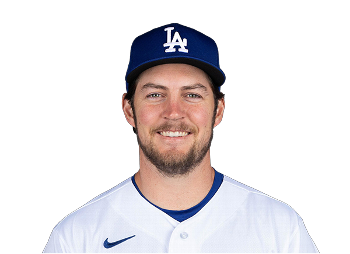
It was only one start, but Bauer already made a much better impression than he did in his rough 2013 season. It looks like 2013 was just a blip on the radar as Bauer regained his velocity and got back to limiting his walks. That lethal combination should have the right-hander back in the majors soon enough.
#22 C.C. Lee, RHP (Previous Rank: NR)
Lee has not gotten much time at the major league level yet, but the right-hander is showing why he is one of the best relief prospects in the organization. With a 9:2 SO:BB in 10.0 innings, Lee has done a good job showing his value to the big league team. Lee is not a high-profile back-end arm, but the right-hander is doing well in the middle innings.
#21 Josh Outman, LHP (Previous Rank: 20)
Though Outman is struggling to limit his walks so far in 2014, the left-hander has managed to limit the production of left-handed hitters. As the second lefty in the bullpen, that is really Outman's real job. Outman should beware, however, as Akron RubberDucks left-hander Kyle Crockett has quickly moved through the system and could make his way to Cleveland in the near future.
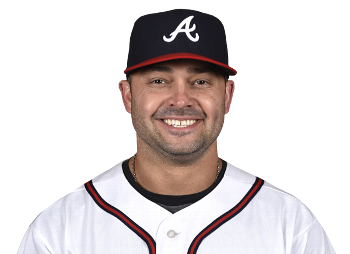
Nick Swisher (Photo: ESPN)If you look at Swisher's strikeout and walk rates, they are practically identical from last year to this year. Yet a significant drop in BABIP -- which should bounce back -- and isolated power -- which may or may not bounce back -- have dropped Swisher to significantly below replacement level. Swisher has a 77 wRC+ this season, but only has one season below a 100 wRC+ in his career; it has been bad, but Swisher will likely rebound at least a little soon enough.
#19 Michael Bourn, OF (Previous Rank: NR)
In addition to still dealing with some hamstring issues, the drop in walks and rise in strikeouts for Bourn in 2014 dropped the outfielder's offense to one of the worst marks of his career. Plus, Bourn has seen his defense dip again this season, rating out more as average than excellent. That combination puts Bourn squarely at replacement level and the center fielder will need to improve both to get back to being productive.
#18 Danny Salazar, RHP (Previous Rank: 5)
Following his electric debut in 2013, we probably should have expected Salazar to go through some growing pains this year. He is still getting strikeouts and doing a good job of limiting walks, but as a power pitcher, Salazar is still susceptible to leaving the ball up -- leading to home runs -- and succumbing to the big inning. He is better than his 5.53 ERA indicates, but with a 4.67 FIP, Salazar may need some time in Triple-A to straighten himself out.
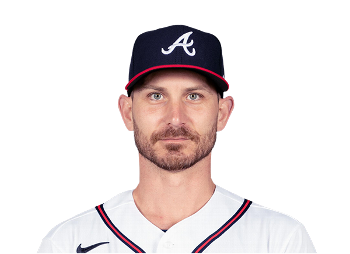
In his first two major league starts, Tomlin did what he always does: not strike out many hitters, walk even fewer, and eat innings. That combination makes Tomlin the ideal fifth starter, as he does a great job of giving the team innings and saving the bullpen. No one should mistake him as more than a back-of-the-rotation starter -- he is not Greg Maddux, who was flat-out dominant during the high of the steroid era -- but Tomlin is very good at what he does.
#16 Marc Rzepczynski, LHP (Previous Rank: 19)
Rzepczynski owns a 6:6 SO:BB in 7.1 innings against right-handed batters, but that is not what the left-hander does best. The left-hander has neutralized left-handed batters all season and remains a great LOOGY option for Terry Francona out of the bullpen. Rzepczynski is best used in that role at this point, though giving the sinkerballing lefty more time to develop against right-handed batters could pay off down the road.
#15 Nyjer Morgan, OF (Previous Rank: 21)
Like Bourn, Morgan has not rated out well defensively in 2014. Unlike Bourn, however, Morgan hit during his time in the majors and carved out a place on the big league roster. Interestingly, Morgan posted a 50 wRC+ in the minors this season compared to a 150 wRC+ in the majors, results that probably show the high-end and low-end of his abilities. The real Morgan likely ends up in the middle of those results and that version of the outfielder is one that can help the team off the bench (once he gets healthy).
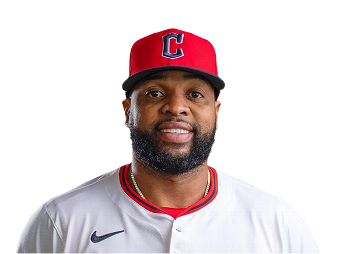
In a way, the fact that Santana made it to replacement level with a .170 BABIP is impressive. Santana will always have his strikeouts, but walking as much as he does has left his on-base percentage at a decent enough figure despite the terrible, unsustainable low BABIP. Plus, Santana is playing passably at third base -- well enough to keep getting time there -- and should get better with more experience. It has not been a pretty season for Santana, but it should just be the prelude to better things.
#13 Scott Atchison, RHP (Previous Rank: 23)
At 38 years old, Atchison is still going strong as he has limited his walks, piled up groundballs, and struck out a decent number of hitters in 2014. He is not overpowering, but the right-hander is still getting results thanks to his nice mix of fastballs, sliders, and changeups. Atchison will not be this good all season -- that .200 BABIP just is not sustainable -- but like Lee, Atchison is a key middle reliever for the team.
#12 Jason Kipnis, 2B (Previous Rank: 1)
Before going out with an oblique injury, Kipnis showed some interesting changes at the plate. The second baseman had more walks than strikeouts while also maintaining the power jump he gained in 2013. Kipnis' offense would have looked even better if his BABIP was not .250, and if he continues this newfound approach at the plate as the BABIP rises, he will be even better than he was in his All-Star season. The second baseman is already one of the better players in baseball but could be finding another gear in his third full season in the majors.
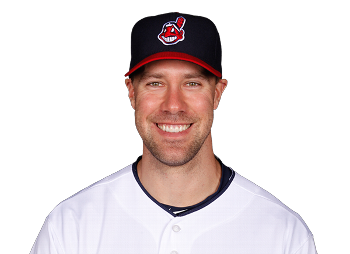
After posting a .227 BABIP in 2013, Murphy saw that regress toward the mean in 2014. That regression up to .302 this season reestablished Murphy as an above-average hitter and made his signing look like a good one for the team. That BABIP mark goes all the way up to .342 when Murphy faces left-handers -- along with a 147 wRC+ -- and the outfielder has continued to solidify his reputation as a platoon bat with a 68 wRC+ against right-handers this year.
#10 Lonnie Chisenhall, 3B (Previous Rank: 11)
Some of Chisenhall's success this season is the .455 BABIP and only having two of his 94 plate appearances come against left-handers. But even if Chisenhall is benefiting from being deployed as a platoon bat, he gets credit for taking advantage of it. While Chisenhall's BABIP will regress, this season's hot streak allowed his career BABIP -- which was always low -- to reach a normal level. Now with an average 99 wRC+ and .160 isolated power in his career, Chisenhall is proving to be a serviceable major league hitter.
#9 Cody Allen, RHP (Previous Rank: 13)
Following last season's breakout, Allen picked up right where he left off with a top-level fWAR among relievers. Time will tell if Allen can maintain his increase and strikeouts and decrease in walks, but as it is, the right-hander is simply dominating. Through his first 115.1 innings, Allen owns a 1.6 fWAR and 2.3 rWAR, stats that really make him stand out. Allen is not the official closer now that Axford has been removed from the role, but he will get plenty of shots in the ninth inning.
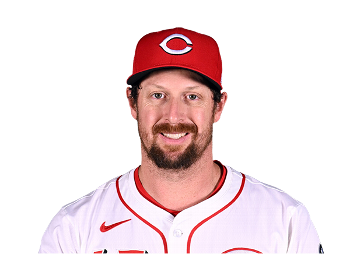
One reason Allen will not get all of the save opportunities is because Shaw has been more dominant in 2014. Shaw does not strike as many as batters out as Allen, but he walks even fewer and benefited from a low BABIP this season. Obviously that is not entirely sustainable, but even with a little regression, Shaw will be a very good reliever. He already has two saves this season after coming into the season with three and has a good chance at gaining more.
#7 Justin Masterson, RHP (Previous Rank: 4)
Though Masterson has not been perfect this season -- as you can see by his 4.31 ERA -- but his 3.68 FIP and 3.47 xFIP point to a player with some positive regression coming his way. The right-hander is still walking a few batters too many, but by maintaining the jump in strikeouts he enjoyed in 2013, Masterson is able to overcome it. Masterson is not your typical top-of-the-rotation ace, but overall, he is someone that can pitch at the top of the Cleveland staff.
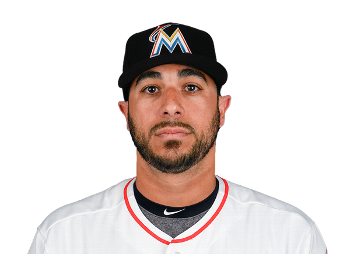
After three seasons with a wRC+ in the 80-range, largely thanks to BABIPs in the .270 neighborhood, Aviles is up to a 106 wRC+ as he plays significant time filling in for Kipnis. Aviles' BABIP is actually up to .313 -- the highest for Aviles since his debut season in 2008 -- and everything about the utility man's past tells us it will fall. Once that starts regressing down, Aviles' offense will look more like it has in the past. But while Aviles will regress, he is doing quite well right now.
#5 Zach McAllister, RHP (Previous Rank: 10)
So far in 2014, McAllister has been the beneficiary of a rock bottom 1.9 percent home run per fly ball rate, a figure that tends to regress toward 10.5 percent as the season goes on. Considering McAllister is not much of a groundball pitcher, that regression will hurt a little more and hurt his 3.89 ERA. In theory, McAllister's 3.90 xFIP -- the stat that corrects for home run per fly ball rate -- would mean his results are right in line with his peripherals, but Fangraphs' Tony Blengino has found McAllister gives up more hard contact than normal and just underperforms those peripherals. If that keeps up, McAllister could be in line for a higher ERA than expected going forward.
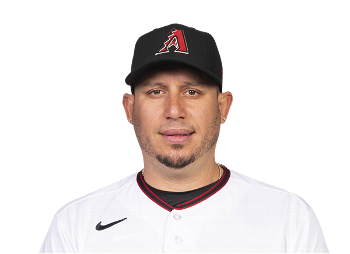
It may not seem like it at times, but Cabrera is all the way back to his 2011-12 All-Star form and doing pretty well in 2014. Cabrera never rated out well defensively, but so far in 2014, he actually is coming out only slightly below-average at shortstop. Combined with a decrease in strikeouts and an increase in walks, Cabrera is on pace for around a 4.0-WAR season. He may not be the future of the position, but for 2014, Cleveland could do a lot worse than Cabrera.
#3 Yan Gomes, C (Previous Rank: 3)
Gomes may have developed a tendency to throw the ball into the outfield, but overall, his defense still rates out around average. Plus, while Gomes has seen some BABIP regression and struck out more this year, he is still producing at an above-average level. Above-average offense with average defense from a catcher is tremendous, and while Gomes may have fallen back from his torrid 2013 season, he is still one of the most valuable players on the roster.
#2 Michael Brantley, OF (Previous Rank: 7)
Brantley currently has a BABIP significantly lower than his career mark, yet the outfielder is also posting a well above-average wRC+ for the first time in his career. A power surge for Brantley, including seven home runs and a .204 isolated power, has the outfielder hitting like a prototypical corner outfielder while also doing the typical Brantley things with strikeouts and walks. The metrics still do not love his defense, but this edition of Brantley at the plate more than makes up for it.
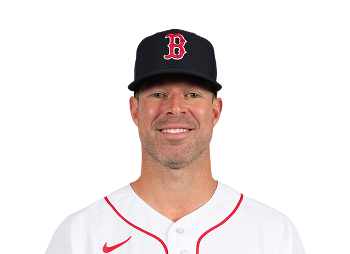
JCorey Kluber (Photo: ESPN)ust like McAllister, Kluber has shown an inability to pitch up to his peripherals throughout his career, a trend that is reoccurring in 2014. A 2.23 FIP is the basis for Kluber's 2.0 fWAR, but since fWAR is based on peripherals, the right-hander's 3.38 ERA and 1.0 rWAR could be more applicable. But even if Kluber never pitches quite like the ace his peripherals say he should be, the right-hander is still the best starter on the team. At worst, Kluber is a valuable middle-of-the-rotation starter who can look like more, and right now, Kluber is certainly looking like more and is the best player on the team.
If you want to follow Jim on Twitter, he’s @JimPiascik. If you want to e-mail him, you can do so at jpiasci1@kent.edu
“Every day is a new opportunity. You can build on yesterday's success or put its failures behind and start over again. That's the way life is, with a new game every day, and that's the way baseball is.”
-- Bob Feller
Democracy Dies In Darkness - WAPO
-- Bob Feller
Democracy Dies In Darkness - WAPO
Re: Articles
4595Good article. A lot more underperformers so far than overperformers!
"I've suffered a great many tragedies in my life....most of them never happened". Mark Twain
Re: Articles
4596Lineup order doesn't matter if the Indians don't hit (or pitch or field): Zack Meisel's musings
CLEVELAND, Ohio -- The sky above Progressive Field on Sunday was blue and undisturbed by any cloud cover.
So, no, the sky was not falling. Not yet. Maybe.
Here are five observations after the Indians' woeful weekend.
1. Order, order: As Terry Francona suggested prior to Sunday's game, the order of a lineup can be overrated. Certainly, Nick Swisher and Carlos Santana deserved to be placed lower in the lineup after six weeks of dreadful hitting.
Still, Swisher approached the plate with two runners on base in three of his five at-bats, so it's not as though he had less pressure to perform by batting sixth instead of second. He went 0-for-5 and stranded seven runners.
2. Help wanted: If the Indians have any chance at being a winning team, Swisher and Santana must hit. It doesn't matter if that happens with them at the top of the order or at the bottom. There isn't enough firepower in the lineup to withstand struggles as deep as the ones Swisher and Santana have endured.
3. Stepping up: When weathering a storm, a team can typically rely upon one area of the club to function and prevent a colossal fall. The Athletics, however, whipped the Indians in every facet of the game over the weekend. For all of the issues the team has had offensively and defensively, the pitching staff hasn't held up its end during the four-game slide. Tribe starters have compiled an 11.49 ERA in only 15 2/3 innings over the last four contests.
4. Stack the deck: The term "ace" is thrown around far too often when referring to a team's top starting pitcher. There is no concrete definition for the word when employing it in a baseball sense, anyway. Justin Masterson has made three consecutive Opening Day starts for the Indians, but that doesn't make the right-hander an ace.
The Indians desperately needed a strong showing from the 29-year-old on Sunday, but Masterson departed after surrendering seven runs in 4 1/3 innings. For his efforts over the last three years, Masterson might be looked at as the preferred option to take the hill when the team is floundering. This season, he hasn't lived up to that billing. What makes that more troublesome is that the Indians seem to lack a starter who can consistently bail out the team when it's scuffling.
5. Blame game: The blame for the sluggish first six weeks can be spread around the Indians' clubhouse.
Francona tried to claim some of it after Sunday's loss.
"What we're doing right now is not good enough," Francona said. "We have to play better. That's on me. I need to have better answers and have our guys better prepared."
Michael Bourn directed it to solely the players.
"It's not on the coaching staff," Bourn said. "It has nothing to do with them. That's on the 25 dudes in this locker room. That's all it has to do with."
CLEVELAND, Ohio -- The sky above Progressive Field on Sunday was blue and undisturbed by any cloud cover.
So, no, the sky was not falling. Not yet. Maybe.
Here are five observations after the Indians' woeful weekend.
1. Order, order: As Terry Francona suggested prior to Sunday's game, the order of a lineup can be overrated. Certainly, Nick Swisher and Carlos Santana deserved to be placed lower in the lineup after six weeks of dreadful hitting.
Still, Swisher approached the plate with two runners on base in three of his five at-bats, so it's not as though he had less pressure to perform by batting sixth instead of second. He went 0-for-5 and stranded seven runners.
2. Help wanted: If the Indians have any chance at being a winning team, Swisher and Santana must hit. It doesn't matter if that happens with them at the top of the order or at the bottom. There isn't enough firepower in the lineup to withstand struggles as deep as the ones Swisher and Santana have endured.
3. Stepping up: When weathering a storm, a team can typically rely upon one area of the club to function and prevent a colossal fall. The Athletics, however, whipped the Indians in every facet of the game over the weekend. For all of the issues the team has had offensively and defensively, the pitching staff hasn't held up its end during the four-game slide. Tribe starters have compiled an 11.49 ERA in only 15 2/3 innings over the last four contests.
4. Stack the deck: The term "ace" is thrown around far too often when referring to a team's top starting pitcher. There is no concrete definition for the word when employing it in a baseball sense, anyway. Justin Masterson has made three consecutive Opening Day starts for the Indians, but that doesn't make the right-hander an ace.
The Indians desperately needed a strong showing from the 29-year-old on Sunday, but Masterson departed after surrendering seven runs in 4 1/3 innings. For his efforts over the last three years, Masterson might be looked at as the preferred option to take the hill when the team is floundering. This season, he hasn't lived up to that billing. What makes that more troublesome is that the Indians seem to lack a starter who can consistently bail out the team when it's scuffling.
5. Blame game: The blame for the sluggish first six weeks can be spread around the Indians' clubhouse.
Francona tried to claim some of it after Sunday's loss.
"What we're doing right now is not good enough," Francona said. "We have to play better. That's on me. I need to have better answers and have our guys better prepared."
Michael Bourn directed it to solely the players.
"It's not on the coaching staff," Bourn said. "It has nothing to do with them. That's on the 25 dudes in this locker room. That's all it has to do with."
"I've suffered a great many tragedies in my life....most of them never happened". Mark Twain
Re: Articles
4597Zach McAllister and Justin Masterson have regressed since that assessment. Zach is certainly no longer our No. 5 performer, but no one has really moved up much to displace him.
Re: Articles
4598This is from Saturday. I missed the news before and don't think it's been posted here.
Indians Promote LHP T.J. House; Option RHP C.C. Lee to Columbus
CLEVELAND, OH - The Cleveland Indians today announced the following roster moves relative to the Major League roster:
Recalled LHP T.J. HOUSE (#58) from AAA Columbus
Optioned RHP C.C. LEE to AAA Columbus.
House, 24, has spent the entire season at AAA Columbus, going 1-2 with a 2.40 ERA in 7 starts
for the Clippers thus far (41.1IP, 35H, 12R/11ER, 11BB, 34K, .235AVG). His 2.40 ERA currently ranks 8th in the International League. The Picayune, MS native has yet to appear in a Major League game and spent three days on the active roster last June 24-26.
Lee has gone 0-0 with a 4.76 ERA in 13 relief appearances for Cleveland this year (11.1IP, 11H, 7R/6ER).
Indians Promote LHP T.J. House; Option RHP C.C. Lee to Columbus
CLEVELAND, OH - The Cleveland Indians today announced the following roster moves relative to the Major League roster:
Recalled LHP T.J. HOUSE (#58) from AAA Columbus
Optioned RHP C.C. LEE to AAA Columbus.
House, 24, has spent the entire season at AAA Columbus, going 1-2 with a 2.40 ERA in 7 starts
for the Clippers thus far (41.1IP, 35H, 12R/11ER, 11BB, 34K, .235AVG). His 2.40 ERA currently ranks 8th in the International League. The Picayune, MS native has yet to appear in a Major League game and spent three days on the active roster last June 24-26.
Lee has gone 0-0 with a 4.76 ERA in 13 relief appearances for Cleveland this year (11.1IP, 11H, 7R/6ER).
Last edited by civ ollilavad on Mon May 19, 2014 5:42 pm, edited 1 time in total.
Re: Articles
4599I don't think House is moving into the rotation so we now have 4 left handed relievers. Expecting lots of pitching matchup changes in the Tigers series?
Re: Articles
4600On second thought, this was probably another one of those moves that are based around option rules: Someone has to go down to make room for Bauer; the sooner Lee goes away the sooner he can come back; Tribe can choose between House and Crockett on who stays, and bring Lee back about 4 days sooner. The players are pretty bad but the front office seems to know what it's doing.
Re: Articles
4601Asdrubal Cabrera: Above-average players & contract extensions
When Asdrubal Cabrera signed a contract extension with the Cleveland Indians in 2012, Manny Acta (rightly) described Cabrera as having "carried the offense" in 2011. Fresh off a 25-home run season in which he was the third-best offensive shortstop in baseball, Asdrubal Cabrera's value was at its zenith.
In a sense, it was the worst time for the Indians to sign him.
Fast forward only two years later to April 2014, the two-year, $16.5 million contract set to pay Cabrera $10 million this year is less unambiguously well-received - in much the same sense as John Elway is not unanimously beloved by Browns fans, or in the same sense as LeBron James in 2011 was slightly less Playing For The Cavaliers. Even in the best of times, Cleveland commits to shunning The Astrocab.
His contract is perhaps one of the largest contributing factors to the great heap of disdain. After a 2013 season in which he posted subpar offensive numbers, coupled with the worst shortstop defense in the league, demands for top prospect Francisco Lindor mounted, both locally and nationally, only adding to enmity toward the shortstop - not only was he objectively below-average, he was perceived as the force holding back the best cornerstone shortstop prospect in the game. Given that, bitterness swelled at the idea of giving $10 million to the below-average Asdrubal Cabrera.
Before that line of rhetoric takes off - i.e.: that Cabby's contract is a substantial overpay - there are two decisively mitigating factors: service time, and the quality of Asdrubal's 2014 play.
First, the end of 2013 marked the end of Asdrubal's sixth year of service time. As a general background note, service time typically works as follows: a team has at least six years of control over a player. For the first three years of service time (slightly under three full seasons), the club is obligated to pay the player only the league minimum. After at least three years of service time have been achieved, a player is eligible for arbitration, which awards players increases in salary below free agent prices but still, for an above-average player, somewhere in the range of $2 million to $6 million. For the next three seasons, arbitration will award raises to that player consummate with service time and merit. After at least six years of service time have elapsed, the player is eligible for free agency.
With this in mind, the first year of Asdrubal's two-year contract extension covered 2013, his third year of arbitration, and paid him $6.5 million. Given that he and the Indians agreed to a 2012 salary of $4.5 million, a $6.5 million dollar salary would have been the most probable result of an arbitration raise.
After the 2013 season, Asdrubal would have been eligible for free agency; however, both Asdrubal and Cleveland agreed to exchange this first year of free agency for $10 million in advance - for Cleveland, it presented the opportunity for a discount if Asdrubal improved; for Asdrubal, it guaranteed financial security if he completely fell off the map. The extension, like all extensions, was a gamble: Cleveland was gambling on Asdrubal's 2013 performance being better (and thus, his 2014 contract being a bargain), and Asdrubal in a sense was gambling on his 2013 performance being poor - thus, ensuring he would be paid well in 2014 even if he had a poor 2013.
Dan Gilbert owns a casino and has won two draft lotteries in the last four years. The Dolans could take a lesson in gambling from him, because they lost the Asdrubal gambit badly. Asdrubal's 2013 season, for reasons that have been addressed previously, was disastrous.
Yet there's a very important distinction to be made here - the Indians have lost the gamble, but whether the extension itself is a loss depends entirely on Asdrubal Cabrera's performance in 2014. Because the six years of service time artificially decrease the amount of open-market free-agent talent, the talent that does reach the free agent market experiences substantial salary inflation as a direct result; the aforementioned article hence lists Asdrubal's salary, $10 million, as a probable open-market salary for a slightly below-average player - for instance, a player with a decisively above-average .735 OPS combined with terrible defense and poor baserunning.
That hypothetical .735 OPS, suggested as a probable 50th-percentile performance for Asdrubal in 2014, isn't far from the mark: Asdrubal's current 2014 OPS is .758. This difference is a substantial change from his .700 OPS of 2013, but an entirely expected one, and not a change large enough to single-handedly catapult him from 'team weakness' to 'team strength.' The biggest change between 2013 Cabrera and 2014 Cabrera came with his defense.
To suggest that a player with Cabrera's six errors hitherto in 2014 has improved over 2013 is both surprising and quite true. To improve substantially upon his 2013 defense, all Asdrubal Cabrera needed to do was not be the proud owner of the worst shortstop defense in the majors. The largest driver of Asdrubal's problems last year was his lack of range; this year, Asdrubal Cabrera's range has been approximately average for a shortstop.
Inn
BIZ
Plays
RZR
OOZ
RngR
ErrR
2013
1099.2
274
216
0.788
51
-13.6
1.1
2014
376
103
78
0.757
29
0.1
-1.1
Credit: FanGraphsc
As one might expect from a player who has made six errors through 376 innings in the field, Asdrubal has made a decreased rate of plays within his zone - that is, the zone within which an average shortstop might be expected to make plays.
What has increased - quite noticeably - is the number of plays that Asdrubal has made outside of his zone, or plays that a shortstop is not necessarily expected to make. As a result, UZR regards Asdrubal's range is as approximately average but his error-prevention worse-than-average - on the aggregate, awarding Asdrubal a defensive grade slightly below average relative to the shortstop position as a whole.
One must note that the context of this discussion is relative to the position of shortstop as a whole. As perhaps the most demanding defensive position on the field, the league-average shortstop is a defender who is very likely substantially better on defense than even an elite defensive first baseman. To receive average or even only slightly below-average defense from a player with Asdrubal Cabrera's offense, whose batting average, on-base percentage, and slugging percentage are all notably better than league average, and whose base-running has likewise been above-average (both in terms of base-stealing as well as the much-discussed 'little things,' such as first-to-third, which he did with great aplomb in Tuesday's victory over Detroit - little things which the Baserunning statistic does capture), yields what is altogether a good baseball player.
Cleveland doesn't need to love Asdrubal Cabrera, nor will it: fans are unlikely to ever forgive him for the double play in the 2013 Wild Card game. Yet whatever enmity does exist, and whatever shortstop happens to be knocking on the door of I-71, the reality is that Asdrubal Cabrera is, right now, an above-average player, one whose starting role would not be out of place on a playoff team. If Lindor is not MLB-ready by the beginning of the 2015 season, this fact will soon make itself clearly and bitterly resonant.
*********
Small-money contracts typically don't look terrible, but as noted, the Indians almost certainly lost the gamble of Asdrubal's contract. The team was hoping Asdrubal would consistently produce well, but his unfortunate 2013 season closed the door on that opportunity. Counter-intuitively, however, the fact that this contract extension is a loss only illustrates the tremendous benefits of contract extensions on the whole.
Between his defense and his offense, Asdrubal is likely to contribute approximately 3 WAR in 2014, a solidly better-than-average number. Because they bought out this free agent year early, the Indians reduced their free agent commitment to a one-year, $10 million contract.
To understand the market for players comparable to Asdrubal, consider Omar Infante, a second-baseman with below-average offense but substantially better defense - on the aggregate, Infante has been an average player. This past offseason, Infante signed a four-year, $30 million contract with the Royals taking him from his age 32 to age 35 seasons.
Consider also Jhonny Peralta. Peralta's numbers, on offense and (surprisingly) defense, have been much better than Cabrera's and, while variable, still stoically above-average. However, Peralta was suspended for fifty games in 2013 for PED use. Despite this PED use, this past offseason, Peralta signed a four-year, $53 million contract with the Cardinals, running from his age 31 to age 34 seasons.
Peralta and Infante's contracts are bellwethers of the size of commitment that must be made to secure free agents who are either average or, in Peralta's case, above-average but also high-risk due to his PED usage. Each of these players was over thirty entering free agency, and their average contract was four years, $40 million - $10 million per year.
Additionally, there's reason to believe that each player's average annual value was deflated by the total years added - earlier on Tuesday, Boston signed Stephen Drew for $10 million for the remainder of 2014, in which the 2-3 WAR, or average-to-above-average, player will be playing his age 30 season.
The effect of Asdrubal's own contract extension was that, after a down year, Cleveland was forced to pay Asdrubal Cabrera, a player who, even including a poor 2013, has been average-to-above-average over the course of his career, a total of $10 million over one year. Unlike Peralta or Infante, however, Cabrera enters the 2014 season going into his age 28 season.
In other words, the Indians signed a younger player whose performance midpoint of Omar Infante and Jhonny Peralta to a one-year contract at the annual rate that Infante and Peralta got, and substantially less than the rate that Stephen Drew received (by the time Drew plays his first game, Asdrubal will have already accumulated 1.2 FanGraphs WAR). The player is less risky than either Infante or Peralta due to age, has a substantially higher ceiling than Drew due to playing time, and the contract, because of its short duration, is also less risky than the Peralta and Infante signings that were regarded as, at least, justifiable moves.
As a result of a contract extension that the Indians got the raw end of, they ended up with an average-to-above-average, low-risk player at free agent prices for a low-risk contract. The Asdrubal Cabrera contract extension was a failure in execution, but the outcome of this failure proves the effectiveness of the method.
To be entirely clear: Asdrubal Cabrera's scenario was not a worst-case scenario. Those who recall the Travis Hafner and Grady Sizemore contracts will have no difficulty recalling the dead money at the end of those deals. Those contracts are the worst-case scenarios. Yet the dead money in Sizemore's contract, approximately $16 million over three years, was insubstantial relative to payroll size, and the Hafner contract was criticized from the very outset for paying substantial sums of money to a 32-year-old dedicated DH. Those two extensions are the worst case scenarios, and even these worst-case scenarios had mitigating factors: one involved a relatively small deadweight loss of payroll, whereas the other was lampooned from its inception for being a poor move.
What the Asdrubal Cabrera contract does represent is a contract that went poorly - but not catastrophically - relative to the scope of all possible trajectories for a contract extension. A relatively poor trajectory gave the 2014 Cleveland Indians a lower risk player and contract than exist on the open market at comparable open-market costs. A relatively good trajectory, like Carlos Santana's, has given Cleveland (the last six weeks aside) a very good hitter for $21 million over five years.
This range of trajectories is broad, certainly, but Asdrubal Cabrera's contract extension shows that only the very worst are a net negative for the team. The success of the philosophy should be very encouraging when one recalls the Gomes, Brantley, and Kipnis deals, deals which, the team hopes, will carry Cleveland even after Asdrubal has taken a cab out of town.
When Asdrubal Cabrera signed a contract extension with the Cleveland Indians in 2012, Manny Acta (rightly) described Cabrera as having "carried the offense" in 2011. Fresh off a 25-home run season in which he was the third-best offensive shortstop in baseball, Asdrubal Cabrera's value was at its zenith.
In a sense, it was the worst time for the Indians to sign him.
Fast forward only two years later to April 2014, the two-year, $16.5 million contract set to pay Cabrera $10 million this year is less unambiguously well-received - in much the same sense as John Elway is not unanimously beloved by Browns fans, or in the same sense as LeBron James in 2011 was slightly less Playing For The Cavaliers. Even in the best of times, Cleveland commits to shunning The Astrocab.
His contract is perhaps one of the largest contributing factors to the great heap of disdain. After a 2013 season in which he posted subpar offensive numbers, coupled with the worst shortstop defense in the league, demands for top prospect Francisco Lindor mounted, both locally and nationally, only adding to enmity toward the shortstop - not only was he objectively below-average, he was perceived as the force holding back the best cornerstone shortstop prospect in the game. Given that, bitterness swelled at the idea of giving $10 million to the below-average Asdrubal Cabrera.
Before that line of rhetoric takes off - i.e.: that Cabby's contract is a substantial overpay - there are two decisively mitigating factors: service time, and the quality of Asdrubal's 2014 play.
First, the end of 2013 marked the end of Asdrubal's sixth year of service time. As a general background note, service time typically works as follows: a team has at least six years of control over a player. For the first three years of service time (slightly under three full seasons), the club is obligated to pay the player only the league minimum. After at least three years of service time have been achieved, a player is eligible for arbitration, which awards players increases in salary below free agent prices but still, for an above-average player, somewhere in the range of $2 million to $6 million. For the next three seasons, arbitration will award raises to that player consummate with service time and merit. After at least six years of service time have elapsed, the player is eligible for free agency.
With this in mind, the first year of Asdrubal's two-year contract extension covered 2013, his third year of arbitration, and paid him $6.5 million. Given that he and the Indians agreed to a 2012 salary of $4.5 million, a $6.5 million dollar salary would have been the most probable result of an arbitration raise.
After the 2013 season, Asdrubal would have been eligible for free agency; however, both Asdrubal and Cleveland agreed to exchange this first year of free agency for $10 million in advance - for Cleveland, it presented the opportunity for a discount if Asdrubal improved; for Asdrubal, it guaranteed financial security if he completely fell off the map. The extension, like all extensions, was a gamble: Cleveland was gambling on Asdrubal's 2013 performance being better (and thus, his 2014 contract being a bargain), and Asdrubal in a sense was gambling on his 2013 performance being poor - thus, ensuring he would be paid well in 2014 even if he had a poor 2013.
Dan Gilbert owns a casino and has won two draft lotteries in the last four years. The Dolans could take a lesson in gambling from him, because they lost the Asdrubal gambit badly. Asdrubal's 2013 season, for reasons that have been addressed previously, was disastrous.
Yet there's a very important distinction to be made here - the Indians have lost the gamble, but whether the extension itself is a loss depends entirely on Asdrubal Cabrera's performance in 2014. Because the six years of service time artificially decrease the amount of open-market free-agent talent, the talent that does reach the free agent market experiences substantial salary inflation as a direct result; the aforementioned article hence lists Asdrubal's salary, $10 million, as a probable open-market salary for a slightly below-average player - for instance, a player with a decisively above-average .735 OPS combined with terrible defense and poor baserunning.
That hypothetical .735 OPS, suggested as a probable 50th-percentile performance for Asdrubal in 2014, isn't far from the mark: Asdrubal's current 2014 OPS is .758. This difference is a substantial change from his .700 OPS of 2013, but an entirely expected one, and not a change large enough to single-handedly catapult him from 'team weakness' to 'team strength.' The biggest change between 2013 Cabrera and 2014 Cabrera came with his defense.
To suggest that a player with Cabrera's six errors hitherto in 2014 has improved over 2013 is both surprising and quite true. To improve substantially upon his 2013 defense, all Asdrubal Cabrera needed to do was not be the proud owner of the worst shortstop defense in the majors. The largest driver of Asdrubal's problems last year was his lack of range; this year, Asdrubal Cabrera's range has been approximately average for a shortstop.
Inn
BIZ
Plays
RZR
OOZ
RngR
ErrR
2013
1099.2
274
216
0.788
51
-13.6
1.1
2014
376
103
78
0.757
29
0.1
-1.1
Credit: FanGraphsc
As one might expect from a player who has made six errors through 376 innings in the field, Asdrubal has made a decreased rate of plays within his zone - that is, the zone within which an average shortstop might be expected to make plays.
What has increased - quite noticeably - is the number of plays that Asdrubal has made outside of his zone, or plays that a shortstop is not necessarily expected to make. As a result, UZR regards Asdrubal's range is as approximately average but his error-prevention worse-than-average - on the aggregate, awarding Asdrubal a defensive grade slightly below average relative to the shortstop position as a whole.
One must note that the context of this discussion is relative to the position of shortstop as a whole. As perhaps the most demanding defensive position on the field, the league-average shortstop is a defender who is very likely substantially better on defense than even an elite defensive first baseman. To receive average or even only slightly below-average defense from a player with Asdrubal Cabrera's offense, whose batting average, on-base percentage, and slugging percentage are all notably better than league average, and whose base-running has likewise been above-average (both in terms of base-stealing as well as the much-discussed 'little things,' such as first-to-third, which he did with great aplomb in Tuesday's victory over Detroit - little things which the Baserunning statistic does capture), yields what is altogether a good baseball player.
Cleveland doesn't need to love Asdrubal Cabrera, nor will it: fans are unlikely to ever forgive him for the double play in the 2013 Wild Card game. Yet whatever enmity does exist, and whatever shortstop happens to be knocking on the door of I-71, the reality is that Asdrubal Cabrera is, right now, an above-average player, one whose starting role would not be out of place on a playoff team. If Lindor is not MLB-ready by the beginning of the 2015 season, this fact will soon make itself clearly and bitterly resonant.
*********
Small-money contracts typically don't look terrible, but as noted, the Indians almost certainly lost the gamble of Asdrubal's contract. The team was hoping Asdrubal would consistently produce well, but his unfortunate 2013 season closed the door on that opportunity. Counter-intuitively, however, the fact that this contract extension is a loss only illustrates the tremendous benefits of contract extensions on the whole.
Between his defense and his offense, Asdrubal is likely to contribute approximately 3 WAR in 2014, a solidly better-than-average number. Because they bought out this free agent year early, the Indians reduced their free agent commitment to a one-year, $10 million contract.
To understand the market for players comparable to Asdrubal, consider Omar Infante, a second-baseman with below-average offense but substantially better defense - on the aggregate, Infante has been an average player. This past offseason, Infante signed a four-year, $30 million contract with the Royals taking him from his age 32 to age 35 seasons.
Consider also Jhonny Peralta. Peralta's numbers, on offense and (surprisingly) defense, have been much better than Cabrera's and, while variable, still stoically above-average. However, Peralta was suspended for fifty games in 2013 for PED use. Despite this PED use, this past offseason, Peralta signed a four-year, $53 million contract with the Cardinals, running from his age 31 to age 34 seasons.
Peralta and Infante's contracts are bellwethers of the size of commitment that must be made to secure free agents who are either average or, in Peralta's case, above-average but also high-risk due to his PED usage. Each of these players was over thirty entering free agency, and their average contract was four years, $40 million - $10 million per year.
Additionally, there's reason to believe that each player's average annual value was deflated by the total years added - earlier on Tuesday, Boston signed Stephen Drew for $10 million for the remainder of 2014, in which the 2-3 WAR, or average-to-above-average, player will be playing his age 30 season.
The effect of Asdrubal's own contract extension was that, after a down year, Cleveland was forced to pay Asdrubal Cabrera, a player who, even including a poor 2013, has been average-to-above-average over the course of his career, a total of $10 million over one year. Unlike Peralta or Infante, however, Cabrera enters the 2014 season going into his age 28 season.
In other words, the Indians signed a younger player whose performance midpoint of Omar Infante and Jhonny Peralta to a one-year contract at the annual rate that Infante and Peralta got, and substantially less than the rate that Stephen Drew received (by the time Drew plays his first game, Asdrubal will have already accumulated 1.2 FanGraphs WAR). The player is less risky than either Infante or Peralta due to age, has a substantially higher ceiling than Drew due to playing time, and the contract, because of its short duration, is also less risky than the Peralta and Infante signings that were regarded as, at least, justifiable moves.
As a result of a contract extension that the Indians got the raw end of, they ended up with an average-to-above-average, low-risk player at free agent prices for a low-risk contract. The Asdrubal Cabrera contract extension was a failure in execution, but the outcome of this failure proves the effectiveness of the method.
To be entirely clear: Asdrubal Cabrera's scenario was not a worst-case scenario. Those who recall the Travis Hafner and Grady Sizemore contracts will have no difficulty recalling the dead money at the end of those deals. Those contracts are the worst-case scenarios. Yet the dead money in Sizemore's contract, approximately $16 million over three years, was insubstantial relative to payroll size, and the Hafner contract was criticized from the very outset for paying substantial sums of money to a 32-year-old dedicated DH. Those two extensions are the worst case scenarios, and even these worst-case scenarios had mitigating factors: one involved a relatively small deadweight loss of payroll, whereas the other was lampooned from its inception for being a poor move.
What the Asdrubal Cabrera contract does represent is a contract that went poorly - but not catastrophically - relative to the scope of all possible trajectories for a contract extension. A relatively poor trajectory gave the 2014 Cleveland Indians a lower risk player and contract than exist on the open market at comparable open-market costs. A relatively good trajectory, like Carlos Santana's, has given Cleveland (the last six weeks aside) a very good hitter for $21 million over five years.
This range of trajectories is broad, certainly, but Asdrubal Cabrera's contract extension shows that only the very worst are a net negative for the team. The success of the philosophy should be very encouraging when one recalls the Gomes, Brantley, and Kipnis deals, deals which, the team hopes, will carry Cleveland even after Asdrubal has taken a cab out of town.
"I've suffered a great many tragedies in my life....most of them never happened". Mark Twain
Re: Articles
4602Pluto on Tribe:
About the Tribe's grit ...
If the Indians do climb into serious playoff contention, this past week may have been the turning point.
After being swept at home in three games by Oakland (outscored 30-6), they swept the Tigers and then won their first game at Baltimore. They won three of four games in their final at-bats. They won consecutive 13-inning games. They saw Michael Brantley play like a big-time run producer.
Josh Tomlin offered to pitch in relief, a day before his scheduled start. Tomlin allowed a run in three innings. Justin Masterson started on three days' rest, and the bullpen refused to buckle under heavy work.
A year ago, the Indians were 4-15 vs. Detroit. They are 4-1 this season.
Cleveland Indians Pre-Game Activities, May 19, 2014Yan Gomes has his confidence back.Chuck Crow, The Plain Dealer
About the Tribe ...
1. Yan Gomes has settled down behind the plate. After incredibly making nine errors in his first 30 games, he has not been charged with any since May 7, covering 11 starts at catcher. He is fifth in the AL in throwing out runners (33 percent).
2. Gomes continues to hit, batting .280 (.805 OPS) with six homers and 18 RBI. In May, he has been a .322 hitter. His fielding came around after fixing his footwork and not rushing his throws. Last season, he had only three errors.
3. The Indians have to be glad that recent contract extensions have Brantley under control through 2018, and Gomes is signed through 2019.
4. It's exciting to see the development of Trevor Bauer. He allowed two runs in six innings -- in both of his starts with the Tribe. In those 12 innings, he has fanned 13 and walked five. His control is much better, his average fastball nearly 95 mph. He was 4-1 with a 2.15 ERA at Class AAA. At 23, he may be figuring it out.
5. Zach McAllister is dealing with what is hopefully a minor back injury. Something was wrong with him. He allowed 17 earned runs in his last three starts, covering 5 2/3 innings. McAllister started the season at 3-0 with a 2.28 ERA. After that, he was 0-4, 9.51.
6. Since Jason Kipnis (oblique strain) went on the disabled list at the end of April, Mike Aviles has stepped in at second base and batted exactly .300. He is such a valuable utility man.
7. Tomlin rolls along with a 3-1 record, 2.91 ERA and delivers a poised performance with excellent control nearly every time he takes the mound.
8. Danny Salazar had a rough first start at Columbus, being shelled for five runs in 2 2/3 innings.
About Justin Masterson ...
A's 13, Indians 3 (slideshow)It's been a frustrating season for Justin Masterson, who has had major problems with lefty hitters.Chuck Crow, The Plain Dealer
Justin Havens of ESPN Insider took a detailed stats-heavy looked at Masterson, who is 2-3 with a 5.32 ERA.
Here was his conclusion: "Masterson's year leading into free agency is off to a rough start, and it's because of three distinct issues -- an alarming drop in velocity, an inability to neutralize left-handed batters and playing in front of a poor defense as a groundball-heavy pitcher. The latter isn't likely to change, and finding the missing two miles an hour on his fastball could prove difficult. For now, it's looking like the Indians were wise to avoid a long-term deal with Masterson."
Part of the reason that the Tribe wasn't willing to meet Masterson's price of about $53 million over three years was the radar gun readings in spring training. The Tribe offered about $45 million for three years.
In the spring, Masterson was excellent (1.09 ERA), but his fastball was in the mid-to-high 80s. Would he start to throw harder, or was there a problem? Last season, his fastball averaged 93.1 mph, and was over 94 in September. This season, his average is 90.5.
What's the big deal?
1. Masterson throws his fastball a lot. Last season, he was second in the American League (to Bartolo Colon) in using the pitch, 73 percent of the time.
2. This season, Masterson is throwing it even more -- 78 percent -- at a lower velocity. Masterson has only one other pitch -- a slider. And it's not very effective against lefty hitters. So he needs his fastball to be swift, and to be sinking.
3. Masterson is a side-arming right-handed pitcher. Lefties have always been a problem. For his career, they have batted .286 (compared to .217 for righties).
4. But last season, Masterson held them to a career-low .248 (righties were .182). In 2013, Masterson was 14-10 with a 3.45 ERA as he made the AL All-Star team.
5. This season, he's being hammered by lefties (.319, .919 OPS). His slider is ineffective, and his fastball lacks the zip to get inside and break some bats.
6. A major problem is control. Masterson is walking 4.3 batters per nine innings, a career high with the Tribe.
7. This season is starting to look like 2012, when Masterson was 11-15 with a 4.93 ERA. He was fifth in the league in walks (3.8 average).
8. In Masterson's defense, he needs some help from his teammates. Every year, he is among the league leaders in getting ground balls. He is being killed by the left side of the infield. According to ESPN, grounders to left side (shortstop Asdrubal Cabrera, third basemen Carlos Santana/Lonnie Chisenhall) are going for a .310 batting average. Last season, it was .209. But another issue is that balls are being hit harder (they actually can track that).
9. Remember how Homer Bailey's big contract ($105 million for six years) was the talk in spring training? That led Masterson's agent to ask for a three-year deal with $17.5 million annual salary. Bailey makes $17.5 million a year with the Reds. Well, Bailey is 3-3 with a 5.49 ERA. Like Masterson, he is being hit hard by lefties (.344).
10. Meanwhile, Masterson's character continues to impress. Another example was his willingness to pitch on short rest Thursday night. That's why the Indians are hopeful that he can pull himself together.
About the Tribe's grit ...
If the Indians do climb into serious playoff contention, this past week may have been the turning point.
After being swept at home in three games by Oakland (outscored 30-6), they swept the Tigers and then won their first game at Baltimore. They won three of four games in their final at-bats. They won consecutive 13-inning games. They saw Michael Brantley play like a big-time run producer.
Josh Tomlin offered to pitch in relief, a day before his scheduled start. Tomlin allowed a run in three innings. Justin Masterson started on three days' rest, and the bullpen refused to buckle under heavy work.
A year ago, the Indians were 4-15 vs. Detroit. They are 4-1 this season.
Cleveland Indians Pre-Game Activities, May 19, 2014Yan Gomes has his confidence back.Chuck Crow, The Plain Dealer
About the Tribe ...
1. Yan Gomes has settled down behind the plate. After incredibly making nine errors in his first 30 games, he has not been charged with any since May 7, covering 11 starts at catcher. He is fifth in the AL in throwing out runners (33 percent).
2. Gomes continues to hit, batting .280 (.805 OPS) with six homers and 18 RBI. In May, he has been a .322 hitter. His fielding came around after fixing his footwork and not rushing his throws. Last season, he had only three errors.
3. The Indians have to be glad that recent contract extensions have Brantley under control through 2018, and Gomes is signed through 2019.
4. It's exciting to see the development of Trevor Bauer. He allowed two runs in six innings -- in both of his starts with the Tribe. In those 12 innings, he has fanned 13 and walked five. His control is much better, his average fastball nearly 95 mph. He was 4-1 with a 2.15 ERA at Class AAA. At 23, he may be figuring it out.
5. Zach McAllister is dealing with what is hopefully a minor back injury. Something was wrong with him. He allowed 17 earned runs in his last three starts, covering 5 2/3 innings. McAllister started the season at 3-0 with a 2.28 ERA. After that, he was 0-4, 9.51.
6. Since Jason Kipnis (oblique strain) went on the disabled list at the end of April, Mike Aviles has stepped in at second base and batted exactly .300. He is such a valuable utility man.
7. Tomlin rolls along with a 3-1 record, 2.91 ERA and delivers a poised performance with excellent control nearly every time he takes the mound.
8. Danny Salazar had a rough first start at Columbus, being shelled for five runs in 2 2/3 innings.
About Justin Masterson ...
A's 13, Indians 3 (slideshow)It's been a frustrating season for Justin Masterson, who has had major problems with lefty hitters.Chuck Crow, The Plain Dealer
Justin Havens of ESPN Insider took a detailed stats-heavy looked at Masterson, who is 2-3 with a 5.32 ERA.
Here was his conclusion: "Masterson's year leading into free agency is off to a rough start, and it's because of three distinct issues -- an alarming drop in velocity, an inability to neutralize left-handed batters and playing in front of a poor defense as a groundball-heavy pitcher. The latter isn't likely to change, and finding the missing two miles an hour on his fastball could prove difficult. For now, it's looking like the Indians were wise to avoid a long-term deal with Masterson."
Part of the reason that the Tribe wasn't willing to meet Masterson's price of about $53 million over three years was the radar gun readings in spring training. The Tribe offered about $45 million for three years.
In the spring, Masterson was excellent (1.09 ERA), but his fastball was in the mid-to-high 80s. Would he start to throw harder, or was there a problem? Last season, his fastball averaged 93.1 mph, and was over 94 in September. This season, his average is 90.5.
What's the big deal?
1. Masterson throws his fastball a lot. Last season, he was second in the American League (to Bartolo Colon) in using the pitch, 73 percent of the time.
2. This season, Masterson is throwing it even more -- 78 percent -- at a lower velocity. Masterson has only one other pitch -- a slider. And it's not very effective against lefty hitters. So he needs his fastball to be swift, and to be sinking.
3. Masterson is a side-arming right-handed pitcher. Lefties have always been a problem. For his career, they have batted .286 (compared to .217 for righties).
4. But last season, Masterson held them to a career-low .248 (righties were .182). In 2013, Masterson was 14-10 with a 3.45 ERA as he made the AL All-Star team.
5. This season, he's being hammered by lefties (.319, .919 OPS). His slider is ineffective, and his fastball lacks the zip to get inside and break some bats.
6. A major problem is control. Masterson is walking 4.3 batters per nine innings, a career high with the Tribe.
7. This season is starting to look like 2012, when Masterson was 11-15 with a 4.93 ERA. He was fifth in the league in walks (3.8 average).
8. In Masterson's defense, he needs some help from his teammates. Every year, he is among the league leaders in getting ground balls. He is being killed by the left side of the infield. According to ESPN, grounders to left side (shortstop Asdrubal Cabrera, third basemen Carlos Santana/Lonnie Chisenhall) are going for a .310 batting average. Last season, it was .209. But another issue is that balls are being hit harder (they actually can track that).
9. Remember how Homer Bailey's big contract ($105 million for six years) was the talk in spring training? That led Masterson's agent to ask for a three-year deal with $17.5 million annual salary. Bailey makes $17.5 million a year with the Reds. Well, Bailey is 3-3 with a 5.49 ERA. Like Masterson, he is being hit hard by lefties (.344).
10. Meanwhile, Masterson's character continues to impress. Another example was his willingness to pitch on short rest Thursday night. That's why the Indians are hopeful that he can pull himself together.
"I've suffered a great many tragedies in my life....most of them never happened". Mark Twain
Re: Articles
4603No Cleveland Indians players found on first release of All-Star Game balloting
CHICAGO, Ill. -- Major League Baseball released its first All-Star Game balloting update on Tuesday. No Cleveland Indians players made the cut.
The release includes the top five vote-getters at each infield position and the top 15 outfielders. Detroit's Miguel Cabrera and Ian Kinsler topped the American League first and second basemen, respectively. Oakland's Josh Donaldson topped the third basemen. New York's Derek Jeter, in his final season, led all shortstops. Baltimore's Matt Wieters led all catchers and Boston's David Ortiz topped all designated hitters.
In the outfield, Anaheim's Mike Trout (the leading vote-getter), Toronto's Jose Bautista and New York's Jacoby Ellsbury paced the pack. The Tigers placed three outfielders in the top 15: Torii Hunter (sixth), Rajai Davis (13th) and Austin Jackson (14th).
Michael Brantley, batting .307 with a .377 on-base percentage, .516 slugging percentage, nine home runs, 39 RBIs, eight stolen bases and a league-high six outfield assists, did not rank in the top 15.
Last season, second baseman Jason Kipnis and right-hander Justin Masterson represented the Tribe at the Midsummer Classic.
The All-Star Game will be held at Target Field in Minnesota on July 15. Per league rules, every team must have at least one representative.
CHICAGO, Ill. -- Major League Baseball released its first All-Star Game balloting update on Tuesday. No Cleveland Indians players made the cut.
The release includes the top five vote-getters at each infield position and the top 15 outfielders. Detroit's Miguel Cabrera and Ian Kinsler topped the American League first and second basemen, respectively. Oakland's Josh Donaldson topped the third basemen. New York's Derek Jeter, in his final season, led all shortstops. Baltimore's Matt Wieters led all catchers and Boston's David Ortiz topped all designated hitters.
In the outfield, Anaheim's Mike Trout (the leading vote-getter), Toronto's Jose Bautista and New York's Jacoby Ellsbury paced the pack. The Tigers placed three outfielders in the top 15: Torii Hunter (sixth), Rajai Davis (13th) and Austin Jackson (14th).
Michael Brantley, batting .307 with a .377 on-base percentage, .516 slugging percentage, nine home runs, 39 RBIs, eight stolen bases and a league-high six outfield assists, did not rank in the top 15.
Last season, second baseman Jason Kipnis and right-hander Justin Masterson represented the Tribe at the Midsummer Classic.
The All-Star Game will be held at Target Field in Minnesota on July 15. Per league rules, every team must have at least one representative.
Re: Articles
4604Should not come as a shock to anyone here.. only player deserving of consideration would be Brantley.
“Every day is a new opportunity. You can build on yesterday's success or put its failures behind and start over again. That's the way life is, with a new game every day, and that's the way baseball is.”
-- Bob Feller
Democracy Dies In Darkness - WAPO
-- Bob Feller
Democracy Dies In Darkness - WAPO